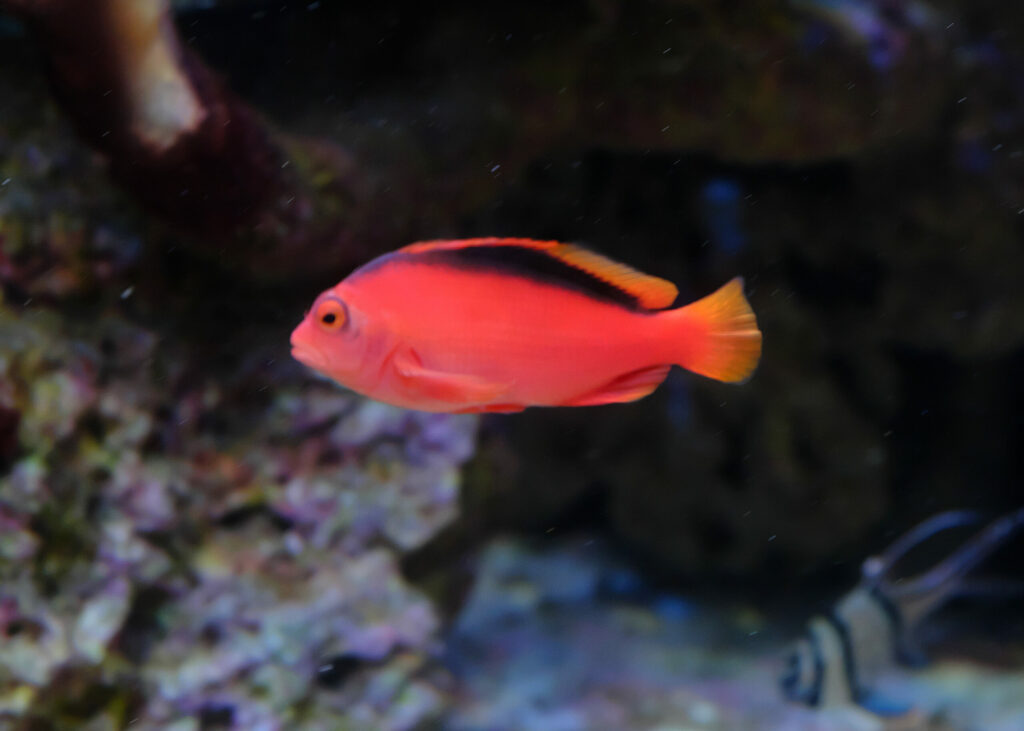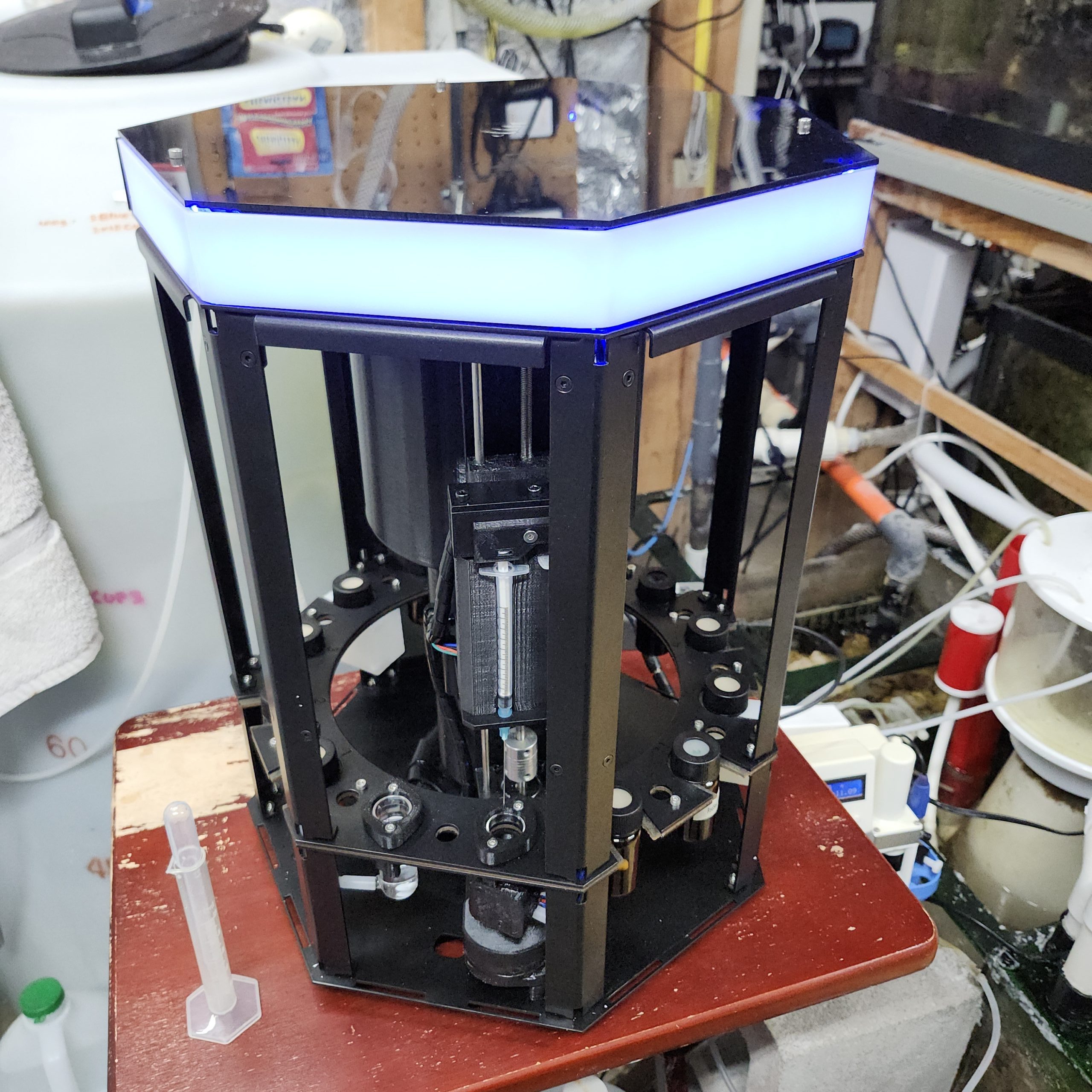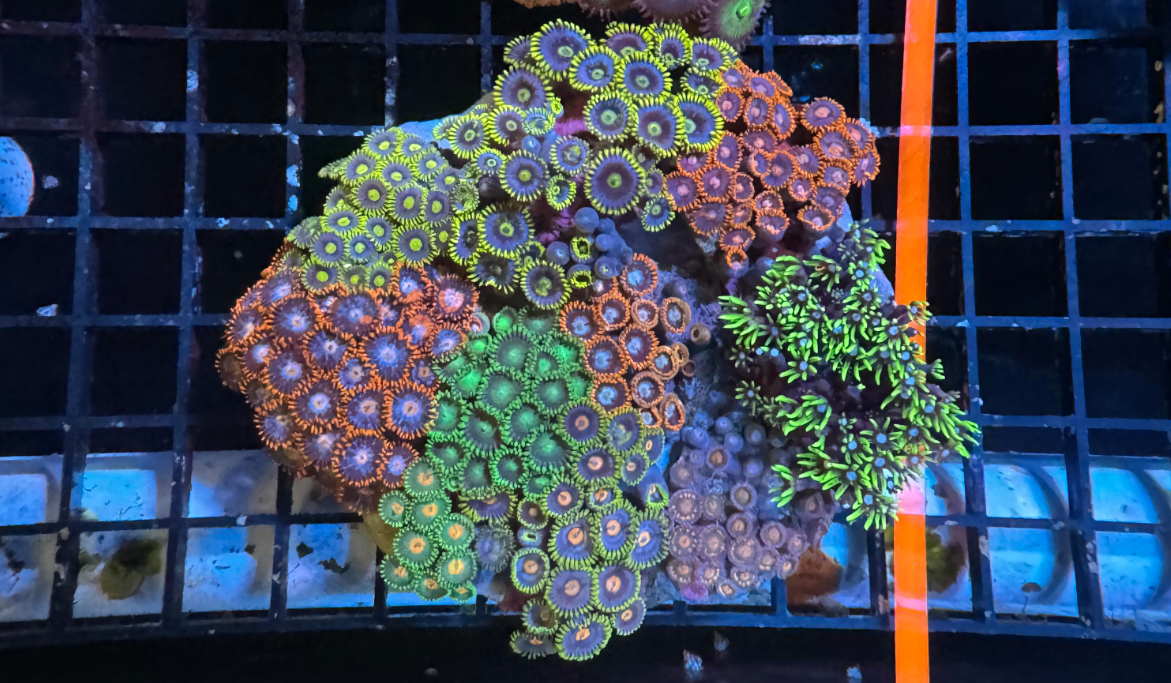This bottom dweller fish is great for many tanks specially since it is not that big. If you like the colors of a warm bonfire on a cold evening, then you will love the looks of the Flame Hawkfish.
Its bright red-orange colors will look awesome in your saltwater aquarium and you might even feel the place warming up. These guys are hunters so make sure to pay attention to the tankmates section to avoid friends becoming food.
We hope you enjoy reading this guide as much as we enjoyed writing it. Here you will learn everything you need and some more to properly care for our Flame Hawkfish. Let’s get started!
Quick Facts 
| Scientific Name: | Neocirrhitus armatus |
| Other Names: | Red hawkfish, Brilliant hawkfish, Flame hawk |
| Reef Safe: | With caution |
| Lifespan: | 5-10 years |
| Size: | 3-4 inches |
| Care: | Medium difficulty |
| Diet: | Carnivore. Crustaceans, invertebrates and even small fish |
| Water Parameters: | 72-80F, 8.1-8.4pH, 8-12dKH, 1.025-1.026SG |
| Tank Size: | 30 gallons |
| Behavior: | Semi-aggressive |
| Breeding Difficulty: | Easy if you can tell the sex and place the eggs in another tank |
Species Summary
The Flame Hawkfish, or Neocirrhitus armatus, is a popular choice for saltwater tanks due to its stunning crimson color and thrilling hunting habits. Also called a Flame Hawk or Brilliant Hawkfish, this species is generally found in the Pacific Ocean near Australia, Fiji, Tahiti and the Samoan Islands.
Out in the wild, you’ll find these beautiful vertebrates exploring the reefs and rock ledges at depths between 3 and 30 feet.
Like many others of the species, the Flame Hawkfish is an active predator that likes to hang around the ocean floor. They will sit and wait atop the coral or terrace for unsuspecting prey to pass so they can feast.
Author Note: These semi-aggressive carnivores have an intermediate care level, making them ideal for experienced aquarists with established tanks. If you are a fast learner you will do fine.
Appearance
The slender Flame Hawkfish has bright red-orange scales and a novel black streak running down their back. A ring of black also surrounds their eyes, much like a bird of prey.
The males and females generally look the same in size and color, though the males are slightly larger. While you may think their sturdy pectoral fins help them swim, their lack of a swim bladder keeps them “walking” along the rocks and coral.
Lifespan
The lifespan of your Flame Hawkfish is anywhere between 5 to 10 years. It’s important to note that without a proper tank environment and care regimen, your hawkfish won’t survive as long or be as vibrant red.
Hawkfish are also social creatures that enjoy living with others of their kind. Keeping between three and five in the same tank will help to lengthen how long they live.
Average Size
If you read the previous section recommending three to five of these social hawkfish to increase their lifespan you might be thinking about needing a large tank but don’t worry. The Flame Hawkfish have an average size of 3 to 4 inches (you can relax now).
Flame Hawkfish Care
Meeting all of your hawkfish’s care needs will guarantee they maintain their color and energy throughout their lifespan. This includes mimicking their natural environment in your aquarium to make them feel more at home and ease their stress levels.
Tank Size
Be sure to use a tank that’s at least 30 gallons for your Flame Hawkfish. They don’t need much room to swim, but they’ll want plenty of horizontal space to “walk.”
If you’re interested in keeping several hawkfish, you may want to consider investing in a tank that’s 100 gallons or more to ensure they have adequate territories.
Water Parameters
- Water temperature: 72 F to 80 F
- pH levels: 8.1 to 8.4
- Water hardness: 8 to 9 dKH
- Specific gravity: 1.025 to 1.026
Tank Setup
To properly care for your hawkfish, you’ll require a tank with plenty of rocks, ledges, caves and hiding structures. They like coral that matches their coloring as it provides better protection.
Author Note: These hawkfish can’t rely on their limited swimming ability to get them a meal or to a safe spot. It’s best to minimize any exhausting vertical climbing and give them plenty to do toward the bottom of the aquarium.
Lighting
Your Flame Hawkfish prefers strong and consistent lighting which makes it a great partner for a small polyp stony coral like the Bird’s Nest Coral.
Filtration
Keep your water clean and well-oxygenated. This species is hardy and can survive in a variety of less-than-ideal environments as long as you keep your nitrate and ammonia levels consistent.
Utilize a high-quality filter to ensure the aquarium’s bio-load doesn’t overwhelm your fish’s health. You should also complete regular weekly water changes of about 15{a47be734f0df8d7f120a7df290cf380c79376e8356d1aab405383bb23aa6ce67} to 25{a47be734f0df8d7f120a7df290cf380c79376e8356d1aab405383bb23aa6ce67} of your tank.
Acclimation
When you bring home a new hawkfish, you’ll want to prepare a quarantine tank and a separate container for acclimation. Introducing your fish too fast to a new environment can put them in shock, which often unfortunately results in death.
For the drip method, you’ll slowly drip water from your tank into the fish’s container over several hours. This allows them to get used to the new water quality and temperature.
Author Note: You should never introduce a new fish to your tank without first undergoing a quarantine period. Many fish illnesses and infections like white spot disease may not be noticeable in the beginning. It’s possible you may not see the problem until the new arrival has already infected others.

Are Flame Hawkfish Reef Safe?
Flame Hawkfish are cautiously reef-safe. They’re carnivorous, so they’re not interested in eating your corals, but they can inadvertently cause damage.
Since these hawkfish like to sit atop your hard and soft coral structures, they may cause them to stay retreated or tucked out of sight. They can also scratch the more delicate polyps with their fins.
If you have a crew of cleaner shrimp like the Peppermint Shrimp, your hawkfish may consider them a snack. You could also see them picking on your hermit crabs, feather dusters or small snails so be careful if you have a Cerith Snail.
Common Possible Diseases & Prevention
While Flame Hawkfish are generally hardy and resistant to illness, they can still develop conditions if infected rockwork or fish are added to the tank. For example, they’re susceptible to uronema, which is a type of parasite that causes discolored and inflamed gills. Also called “swimmer’s disease,” this infection might transform your fish to EXORCIFISH since it will swim and turn its head strangely while sticking toward the water’s surface.
White spot disease, on the other hand, may result in a loss of appetite, slow swimming, constant hiding and eventually death.
You can prevent major illness outbreaks in your aquarium by maintaining a high water quality. Carefully examine and monitor all new additions. When you need to utilize medications, separate the infected fish into another tank to avoid harming the rest of the community.
Food & Diet
Flame Hawkfish enjoy a balanced diet of foods like crustaceans, invertebrates and even small fish when given the chance. In some cases, a Flame Hawkfish can develop picky eating habits in captivity, which can make it harder to ensure they’re receiving the proper nutrients.
Provide your hawkfish with a varied diet of mysis shrimp, fish flesh and crustacean meat that’s still in the shell. They require daily meals to maintain their health as well as essential vitamins and fatty acids.
Behavior & Temperament
When you add a new Flame Hawkfish, you can expect them to stake out a territory at the bottom of the tank. This is where they’ll spend most of their time, looming over a rock ledge or hiding between the tentacles of a sea anemone.
They’ll spend the day watching from their perch until night falls when they’ll hide away in their cave to sleep. Even when they’re resting, they’ll still frequently check the area for potential predators.
You won’t find these fish swimming around in the open waters. When scared, they may dart higher in the tank and have been known to jump out.
Author Note: If you’re lucky, you may see your hawkfish try to swoop in on their prey. They’ll then have to awkwardly make their way back to their perch to repeat the process.
Flame Hawkfish Tankmates & Predators
These fish are semi-aggressive but will only antagonize those they view as food or intruders in their territory. It’s ideal to give your hawkfish tankmates that favor the middle or upper regions of the aquarium.
They can butt heads with other bottom-dwellers like blennies or gobies that roam too close to their cave or chosen perch. The Lawnmower Blenny and the Mandarin Goby are two well known bottom dwellers to avoid.
When your hawkfish spots others that are smaller than them, their hunting instincts will activate and they may try to eat them. Most fish will have no problem outswimming them by moving higher in the tank.
However, while this fish can fight in certain circumstances, they also have a charming peaceful streak. When they notice others arguing, they may come over to break up the scuffle. As long as they’re left alone in their territory, hawkfish make for great community members.
These are some of the best tank mates for your Flame Hawkfish:
Breeding
Flame Hawkfish, like all of the other members of the Cirrhitidae group, are sequential hermaphrodites. This means that they’re initially born female. After a group is formed, the most dominant of them will change into a male and take control of the harem.
How can you tell the sex?
It’s difficult! The largest is often the male, as their bigger size contributes to their overall dominance.
You can lower the risk of your hawkfish fighting by adding them to the tank together when they’re young. To prompt your adult hawkfish to spawn, you’ll want to slightly increase the temperature (they like a romantic atmosphere) and provide high-quality foods like nutrient-rich pellets and meaty bits.
In the wild, these egg layers will spawn in the evening or around dusk (you see? very romantic creatures!). After a brief courtship ritual between the hawkfishes, the female will release her eggs close to the surface.
They can take around three weeks to hatch in an ideal tank environment. To ensure the best results, you’ll need to have a larger tank upwards of 100 gallons with excellent water quality.
Author Note: Once you spot eggs, gently scoop them out and place them in a separate incubation tank. Leaving them in the same aquarium will quickly lead to them being eaten by the other fish. After they hatch, feed them protein-rich copepods and brine shrimp two to three times daily.
The fry are much more sensitive to water changes than their parents. Avoid letting your water conditions fluctuate. Flame Hawkfish can lay thousands of eggs at a time, so you don’t have to be too worried if you notice a few have passed. You should still remove them quickly before the decay impacts the health of the other fry.
Finishing Up
Congratulations! You have earned the Flame Hawkfish expert badge. We hope the guide provided you with enough information to care for your bonfire looking friend.
We love Flame Hawkfish because their small size comes with a big personality. As long as your tank is clean, full of nutrients and has the right comrades you will not need to worry for a while.
Every fish requires some effort and we think it is totally worth it! If you are curious about other fish in the same category check our Saltwater Fish Care Guides and when showing off your fish to your friends in social media don’t forget to tag us on Facebook.
If you have any questions or comments don’t hesitate to reach out. We wish you the best of luck!




